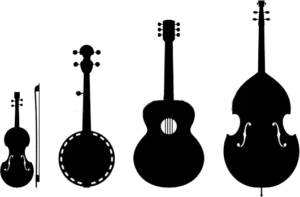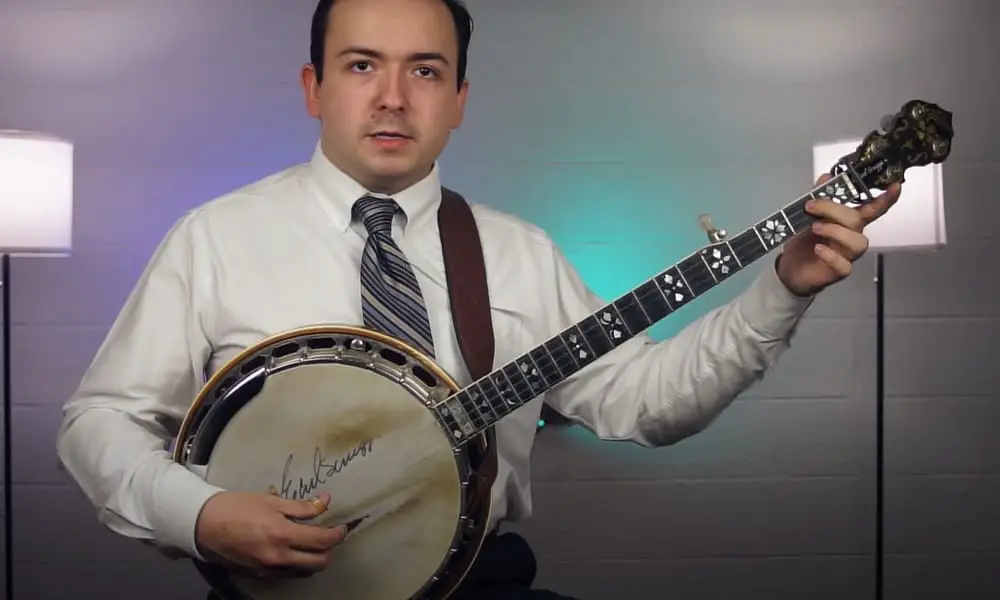Inspired by your favorite musician’s playing, you decide you also want to play. You even bought a brand new banjo. But you discovered it wasn’t as easy as you thought and became frustrated with it. If you still wonder how to hold a banjo, it’s time to learn all nuances. So, let’s take it in order.
Guide on How to Fulfill Your Dream of Playing the Banjo
- Buy your first banjo.
- Be patient, and don’t be eager to start playing in the first few days.
- Learn the structure of the banjo.
- Practice holding the instrument correctly.
- Find a personal banjo instructor offline.
- Choose a favorite song you’d like to learn.
- Practice regularly, at least a couple of hours a day.
- Done! You play the banjo.
Your First Steps Toward Playing the Banjo
If you pick a banjo, it doesn’t mean you have to play your first notes on the same day. At first, you need to develop essential skills and understand how the banjo works.
What are all the different parts of the banjo called?
The banjo seems like a simple musical instrument. However, it has many small details to set up and use correctly. This terminology will help you learn the instrument quicker.
You can divide a banjo into 2 parts. These are the fingerboard and the main body. The fingerboard consists of the following sections:
- The neck with the fret, the strings, and the fifth string peg.
- The head of the fingerboard with pegs that tune the banjo strings.
- Heel where the neck is attached to the main body.
The main body consists of these parts:
- The base of the banjo. It is the rustic pot with the other parts attached.
- Metal rods holding the drum shell in place.
- The tone ring. They are of 2 types. One is tensioned flush with the membrane, and the other protrudes slightly. It determines how bright the sound will be.
- The string carrier and the bridge. The first ones attach the strings to the banjo’s body. The bridge serves as a support for the strings.
- Armrest. The armrests on it during play.
Holding The Banjo: Step-By-Step Guide
Correctly positioning your whole body while playing the banjo will allow you to hold your hands correctly to the instrument.
- Sit down, keeping your back straight. Keep your feet on the floor with your knees at a right angle.
- Place the instrument on your right thigh. There must be a small space between your torso and the banjo. The angle between your left hip and the fingerboard should be approximately 45º.
- Hold the instrument loosely in your hands.
- You don’t have to reach for the banjo. Instead, rotate the tool to get your hands in the correct position.
Banjo right-hand position
- Your right hand is responsible for the quality of the music, so keep it relaxed. Place the opposite side of your hand from your thumb on the string holder. Or, if you find it difficult to reach, you can put your hand near the bridge without touching it to avoid spoiling the sound.
- Imagine that a straight line runs from the head of the fingerboard to your right hand. It runs along your wrist and tends to your right elbow. Of course, you can’t keep your arm that straight, but it’s an axis you should aim for. The correct position of the right wrist is when you hold it along the strings.
Banjo left-hand position
- The fingerboard should rest loosely in your left hand between your thumb and forefinger. Remember, you must grip the fingerboard with your fingers, not with the palm of your hand.
- The left hand at the elbow tends downward freely. Do not put your elbow out to the side.
The best way to learn banjo
You can decide to save money and study from free video lessons. However, it can take up much of your time and your desire to play later. Here are steps to help you not give up on your dream:
- Hire a personal tutor. He’ll know your skills better and give you the proper instruction.
- Stay focused on what’s important. If you have homework to do, you can’t watch TV and play at the same time. You have to spend quality time with your instrument.
- You have to practice every day. Even if you are a super-busy person, playing the banjo for 15 minutes daily is better than being reminded once a week.

FAQ About Playing the Banjo
I hope this article has helped you remove your doubts and begin to take decisive steps toward your dreams. Here are some common questions that many newcomers are concerned about.
I’m left-handed, do I need a special banjo?
In practice, a person can learn to perform actions with a weak hand. But It is better to buy one to get used to the musical instrument more quickly. Many banjo models are available specifically for left-handed players.
How do you tell if a banjo is left-handed?
The left-hand banjo is the mirror image of the right-hand banjo. The first string is called the first string in both versions of the musical instrument. Essentially, you just play with the other hand.
Do I need a pick to play the banjo?
For example, a bluegrass player may have a plastic plectrum on his thumb and a metal plectrum on his forefinger and middle finger. Still, a plectrum is not a necessary attribute for playing the banjo.
How to hold a pick for banjo?
There are no strict rules on how to wear a pick. Usually, it is worn to cover the soft part of the finger. How much the plectrum protrudes over the tip of your finger depends on your preference.

Your Dream Is Easy to Achieve
The success of any business is about 20% talent and 80% hard work. If playing the banjo is your lifelong dream, start learning banjo basics today, and you could become a global country music star in time.
How did you learn to play the banjo? How long did it take before you played your first tune? If you don’t know how to play yet, what’s holding you back? Share your thoughts in the comments.
Also read:


